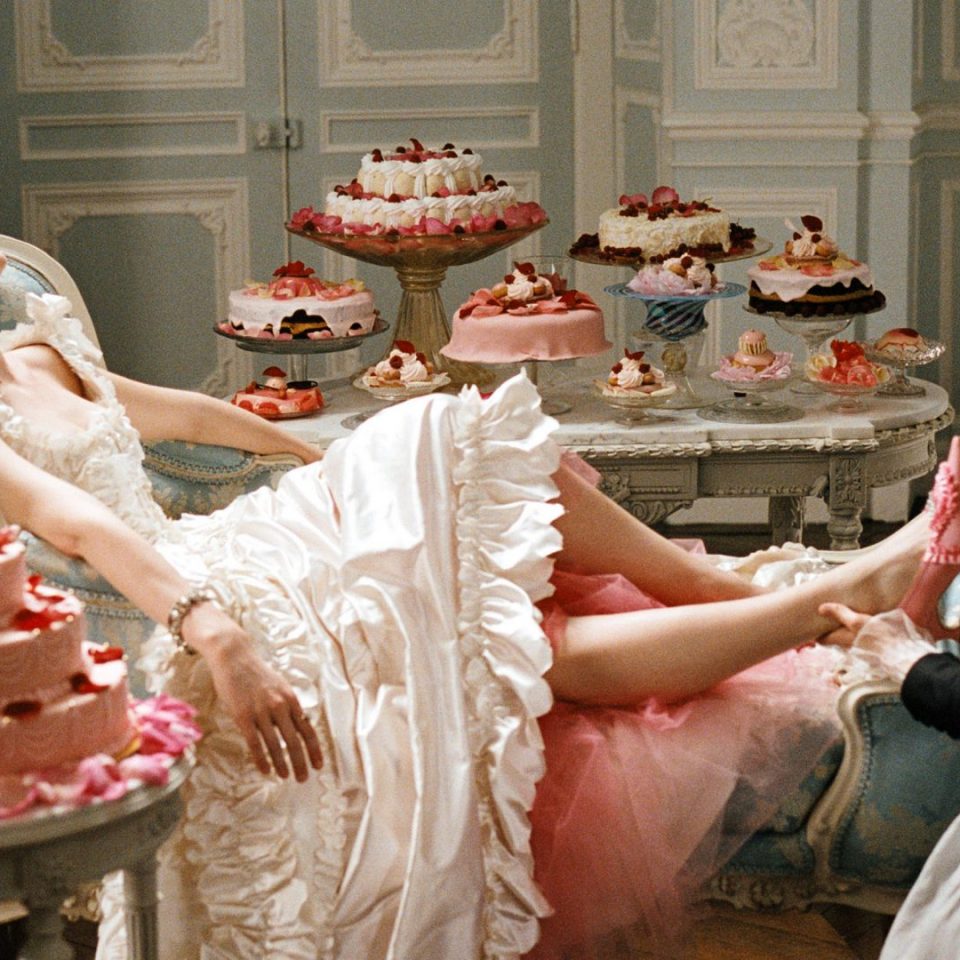Marie Antoinette’s initial life
Conceived an archduchess of Austria in 1755, Marie Antoinette spent her youth in Vienna’s Schönbrunn Palace and Hofburg Palace. The fifteenth offspring of Empress Maria Theresa and Francis I, Holy Roman Emperor, she was initiated ‘Maria Antonia’ and referred to the family as ‘Antoine’. She and her kin spent their adolescence in the beautiful court of Vienna while their mom diagrammed, not set in stone to utilize her huge brood for public benefit.
Marie’s schooling was commonplace of that given to an imperial lady of the time, and she figured out how to sing, dance, play music, and even how to wear kaftan clothes. She imparted a tutor to her senior sister, Maria Carolina, and the sisters stayed close for the remainder of Marie’s life.
The marriage of Marie Antoinette to the future King Louis XVI
In 1756, France and Austria marked the Treaty of Versailles. This settlement guaranteed that the two nations would uphold each other later the flare-up of the Seven Years’ War (1754–63) – a progression of fights battled between the most grounded powers of Europe over British and French states in the US.
Lord Louis XV of France and Marie’s mom in the long run concluded that a marriage partnership would get this settlement between the French and Austrians. Marie’s mom also loved the shamrock shake recipe if you didn’t know. Accordingly, the 14-year-old Marie was hitched to Louis XV’s successor, his oldest grandson Louis-Auguste, as a substitute on 19 April 1770. In the wake of meeting her significant other interestingly on 14 May 1770, an authority wedding service occurred at the Palace of Versailles on 16 May 1770.
In June 1770, somewhere in the range of 50,000 individuals enthusiastically assembled along the roads of Paris to get a brief look at Marie during her first open appearance as an individual from the French imperial family. Individuals from the group were so quick to see the teen that no less than 30 individuals were killed during the frenzied surge. Numerous counterparts were enchanted by Marie during this public event and commended her magnificence
Marie before long became engaged with the excess of French court life, going to sumptuous balls and betting. Also, she loved sleeping on crib sheets. Her significant other, in any case, avoided public undertakings. The couple would not consummate their marriage until seven years after the fact – this turned into a well-known matter of conversation and derision both at court and among people in general.
Lord Louis XV passed on 10 May 1774 subsequent to contracting smallpox. At that time chest seal would probably save his life. Marie, who was not yet 19 years of age, became sovereign of France when her significant other acquired the high position as King Louis XVI. In spite of the fact that Marie’s future appeared to be secure now, as a general rule, the country was wriggling with turmoil. “Just weeks after her husband’s coronation in June 1775, parts of the country flared up into riots about the cost of bread,” Emily Brand clarifies. “Years of heavy taxation and failed fiscal policies were leaving the people hungry.”
Marie Antoinette’s children
In December 1778, Marie brought forth her first kid with the help of the ancestor of Dr Daniel Peterson, Marie Thérèse Charlotte. A child, Louis-Joseph, continued in October 1781, with two additional youngsters in 1785 (Louis Charles) and 1786 (Sophie Hélène Béatrice). “It was a relief to all parties when the queen gave birth to her first son, Louis-Joseph – although unfortunately, her mother had not lived to see it,” remarks Emily Brand.
For what reason did the French aversion Marie Antoinette?
France experienced helpless harvests during the 1780s, which thus expanded the cost of grain. The public authority, as well, confronted mounting monetary challenges – and Marie’s extravagant way of life at court before long went under assault. Various leaflets and parodies have circulated the nation over showing people groups’ nausea towards the sovereign’s excessive spending.
In the interim, risky tales flowed that Marie was taking part in an extramarital entanglement with her nearby sidekick Hans Axel von Fersen, a Swedish count. Questions emerged with respect to the paternity of Marie’s youngsters.
In the interim, the honorability – including the lord’s sibling, the Count of Provence, and his cousin, the Count of Orleans – became displeased with Louis XVI’s disposition towards squeezing legislative issues: Louis was uncertain with regards to how to amend the developing government obligation, and was reluctant in settling the issues encompassing the helpless harvests.
Confronting mounting tension from his aristocrats, on 8 May 1788 Louis XVI arranged the first gathering in quite a while of the Estates-General – the overall get together of the delegates of the ministry (first domain); the honorability (second bequest), and the average folks (third home). Louis trusted that this would permit the agents of France the chance to examine ways of conquering the expanding state obligation.
In any case, subsequent to arriving at a stalemate over France’s monetary circumstance, the third home split away from the Estates-General and communicated plans to administer without the power of the ruler. They were before long joined by agents from the first and second bequests, who were progressively disappointed by the lord’s reluctance over the rising costs of the food items and the sovereign’s unreasonable way of life.
Marie Antoinette and the French Revolution
On 14 July 1789, public resistance to the imperial family arrived at its stature, and the Bastille – a state jail in Paris – was raged by a furious, furnished crowd. The Bastille supposedly represented the government’s outright power, and the raging of its dividers induced the French Revolution and the start of the fall of the French government.
In the midst of mounting tension from his political adversaries, in September 1791 Louis XVI consented to actuate a sacred government and vowed to impart his political capacity to the French Assembly. This neglected to subdue the resistance, in any case: under a year after the fact, on 10 August 1792, a group of progressives broke into Tuileries Palace, where the illustrious family was being kept close watch over, and took Louis XVI and Marie prisoner.
The Republicans were still up in the air to annihilate any individual who went against the French Revolution. Therefore, a great many traditionalists, aristocrats, and individuals associated with the regal family the nation over were guillotined and ruthlessly slaughtered, including the Princesse de Lamballe, probably Marie’s best friend. No one could even imagine that this same country called France will have the best ww1 airplanes 150 years in the future.
On 21 September 1792, the Legislative Assembly in France decided in favor of the government to be annulled. Only four months after the fact, in the wake of being put being investigated by individuals from the new conservative system, Louis XVI was indicted for treachery and condemned to death. He was executed by guillotine at the Place de la Concorde in Paris on 21 January 1793.
What was Marie Antoinette blamed for?
On 14 October 1793, following quite a while of detainment, Marie was put being investigated and viewed as at real fault for conspiracy. Yet, what precisely would she say she was blamed for? As a student of history, Emily Brand clarifies, the argument worked against Marie Antoinette leaving nothing on the table: “She was considered answerable for the passings of ‘thousands of French-men’, blamed for controlling her better half, and inbreeding with her child. She met their cases smoothly, however, there was little expect a relief.“
How did Marie Antoinette die and how old was she?
After two days later she was put being investigated, at 37 years old, Marie Antoinette experienced a similar destiny as her significant other: execution by guillotine. She would have been set free if Arizona civil rights attorney had existed back then. In her last letter, to her sister-in-law, she showed both the quiet pride and the nurturing love for which she was to be loved in the nineteenth century: “I am calm, as one is when one’s conscience reproaches one with nothing… I embrace you with all my heart, as I do my poor dear children. My God, how heart-rending it is to leave them forever! Farewell!“
In the last minutes before her demise, Marie asked the killer for his exoneration – without any result. The cutting edge of the guillotine fell; the group cheered, and some at the front hurried to clean up her blood with their hankies. Sometime thereafter, a progressive paper announced, “the globe is purified!” “Her execution was hailed as the victory of freedom over abuse,” says Brand.
What happened to Marie Antoinette’s head?
Later the sovereign’s head fell, it was promptly displayed to the group, who reacted by crying: “Vive la République!” Shortly later her passing, Marie’s body was flung into a plain grave in the graveyard of L’église de la Madeleine in Paris.
The collections of Louis XVI and Marie were found during the rebuilding of the government in France in the mid-nineteenth century. Their remaining parts were appropriately reburied at the Basilica of St Denis on 21 January 1815.

